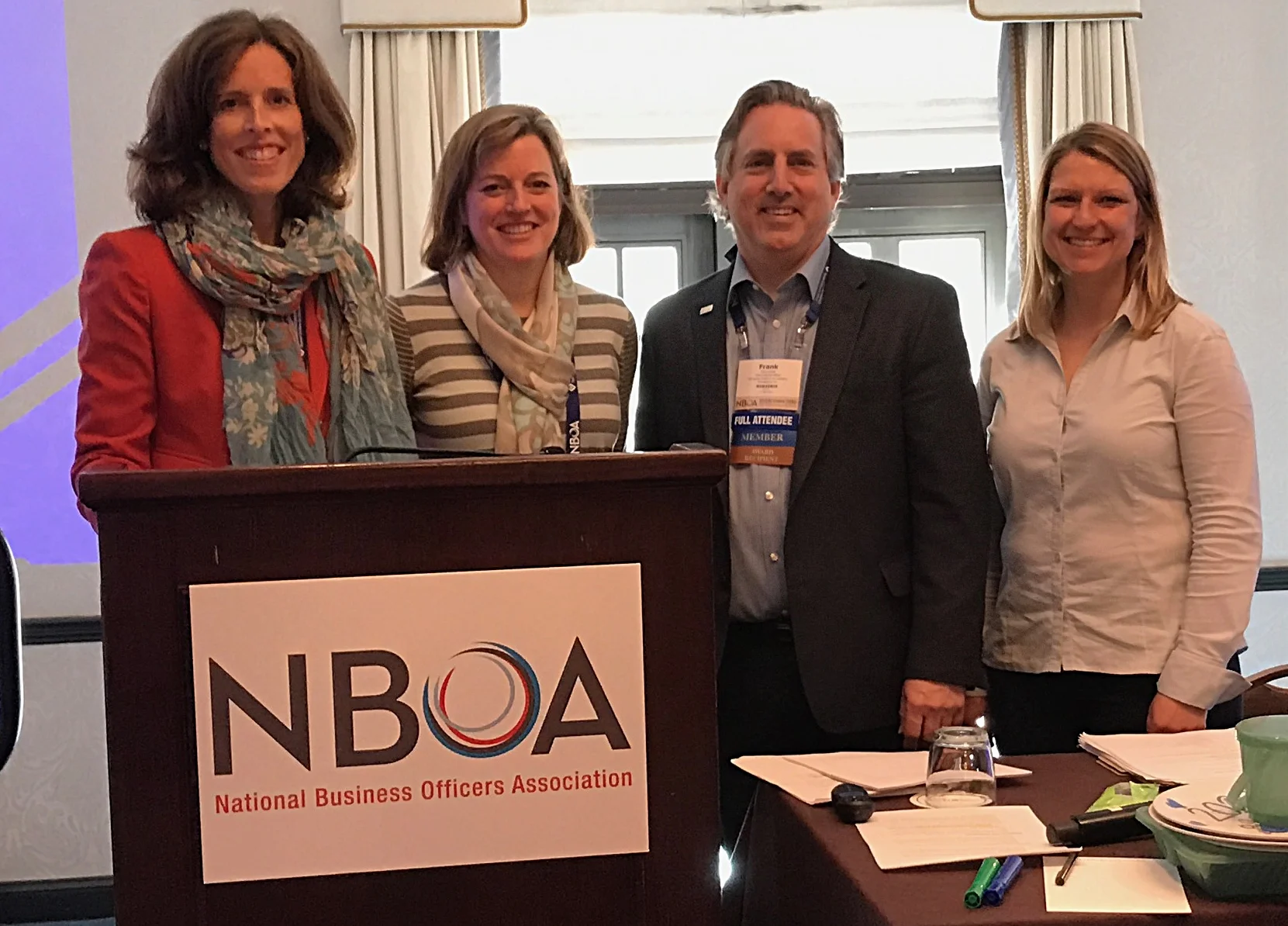Over 20 participants from 11 schools attended the PAISBOA Sustainability meeting at Springside Chestnut Hill Academy on October 27, 2022. The theme for the evening: “Getting Back to Where We Were Before Covid” related to environmental sustainability.
Celebrating Trees: Is Your School Arboretum-Worthy?
Schools Re-imagine Outdoor Spaces
Studies show that being outside in nature has the ability to calm and heal. Spending as little as 15 minutes in nature lowers cortisol stress levels and blood pressure. Nature helps foster our creativity and observation skills. With the increase of screen time, we often forget to unplug and head outside.
Green Schools: Building Sustainability in a New Reality
Courtyard Renovation Sparks a Green Future for Reading High School
While the 2019-20 school year may have been an unconventional academic year for Reading High School (RHS), it has been a year of green changes. During this time, the school created plans to transform its overgrown and underused interior courtyard into a welcoming outdoor classroom and natural refuge. Students and teachers of a “green team” led these efforts. Their hard work paid off: RHS became the first school in Berks County, PA to become a certified National Wildlife Federation Eco School, achieving the bronze award for its “schoolyard habitat” improvements.
Getting Students Unplugged and Outside
Mary Ann Boyer and Kristin Kaye of Boyer Sudduth Environmental Consultants presented "Science and Storytelling: An Interdisciplinary Approach to Environmental Literacy" at the NSTA’s conference in Baltimore earlier this month. Boyer and Kaye shared their experiences on how scientific observation and storytelling open students’ eyes to the natural world. "Getting students outside and unplugged is important to their connection with nature," notes Boyer.
Transforming Schoolyard Habitats and Nature Play Spaces Offer Students More than Exercise
William Cramp Community School's new playspace.
This spring, Boyer Sudduth worked with PA Green and Healthy Schools Partnership (PAGHSP) on a series of educational webinars and workshops for school administrators, teachers, and staff focused on efforts to “green” schools. On April 6, 2017, PAGHSP featured a webinar called “Transforming Schoolyard Habitats and Nature Play Spaces,” which can be viewed below.
In the webinar, Director of Interpret Green & Neighborhood Nature Works in Philadelphia, Craig Johnson, and Sr Policy Advisor for the MD Dept of Natural Resources, Sandi Olek, share their expertise on creating wildlife habitats and nature play spaces for schoolyards, playgrounds, and parks. Sandi shows examples of innovative play environments built from natural elements. Craig illustrates excellent examples on how schools can enhance outdoor playspaces by adopting guidelines from National Wildlife Federation to create innovative “learning landscapes.” These landscapes can include pollinator gardens, bird feeders and houses, bug magnifier posts, sundials, compass roses, naturecams, and weather stations for environmental education and free-play exploration. Here, children can study nature and enjoy recreation in the same location. Craig and Sandi also shared a list of kid-friendly nature tools for observing and recording critters.
According to Craig, nature habitats help playspaces come alive. Craig’s work with Philadelphia’s William Cramp Community School gives students direct and daily access to the wondrous web-of-life. Birds, butterflies, bees, beetles, bats, and a host of native plants provide endless opportunities for children to connect with nature and each other. Craig notes, “Within two days of installing the bird feeders, mourning doves, sparrows, and finches were singing in schoolyard.” Another teacher reflects, “I have been here for 20 years. This is the first time I have ever seen birds at this school. The students are so delighted.”
In competition with television, phones, and video games, “unplugged” outside time is critical to a child’s playtime and development now more than ever. The American Academy of Pediatrics recommends 60 minutes of unstructured free play as an essential part of children’s physical and mental health and social development. Click here for a link to the webinar.
A William Cramp student in the school's new garden.
Article submitted by Emily Tronson, a junior majoring in Ecology & Evolutionary Biology and English Literature at the University of Rochester who is currently interning at Boyer Sudduth Environmental Consultants.
AFS Outside Committee Considers Next Projects
Take a Hike--With a Child
According to Richard Louv, advocate for connecting children and their families to nature and author of Last Child in the Woods (2008), “Today, average eight-year-olds are better able to identify cartoon characters than native species, such as beetles and oak trees, in their own community.” Louv has done extensive research on how children’s mental, physical, and spiritual health are directly linked to our relationship with nature (Louv, 2008). Just as children need sufficient sleep every night, they also require significant exposure to nature.










